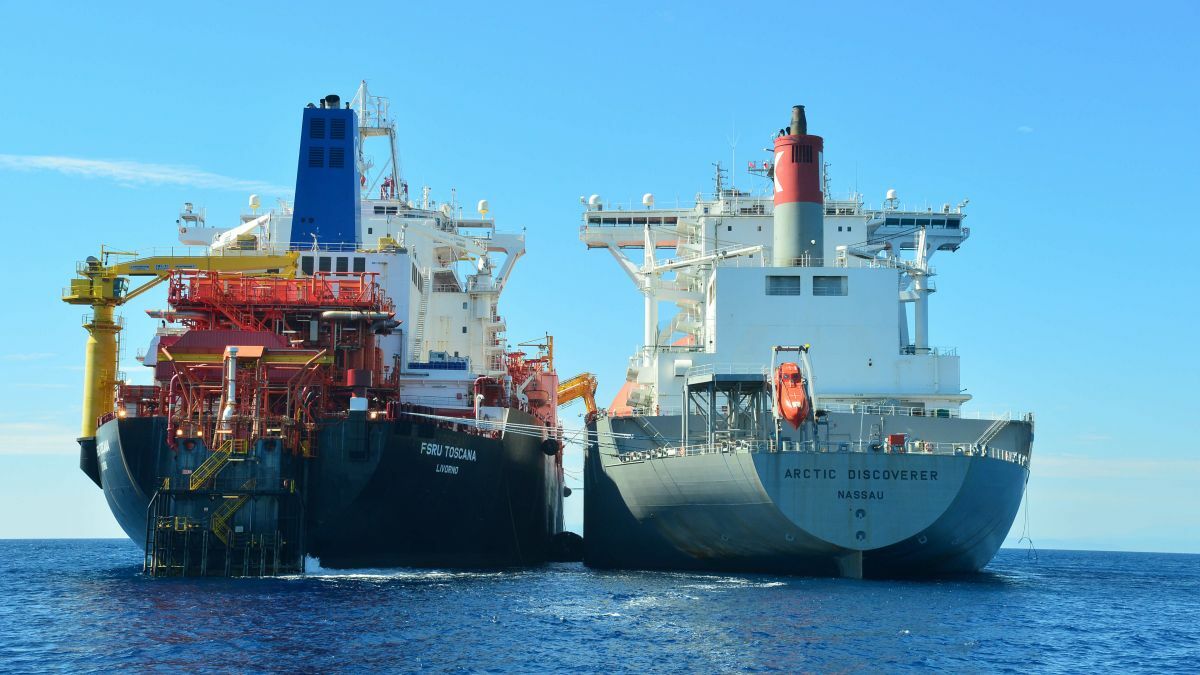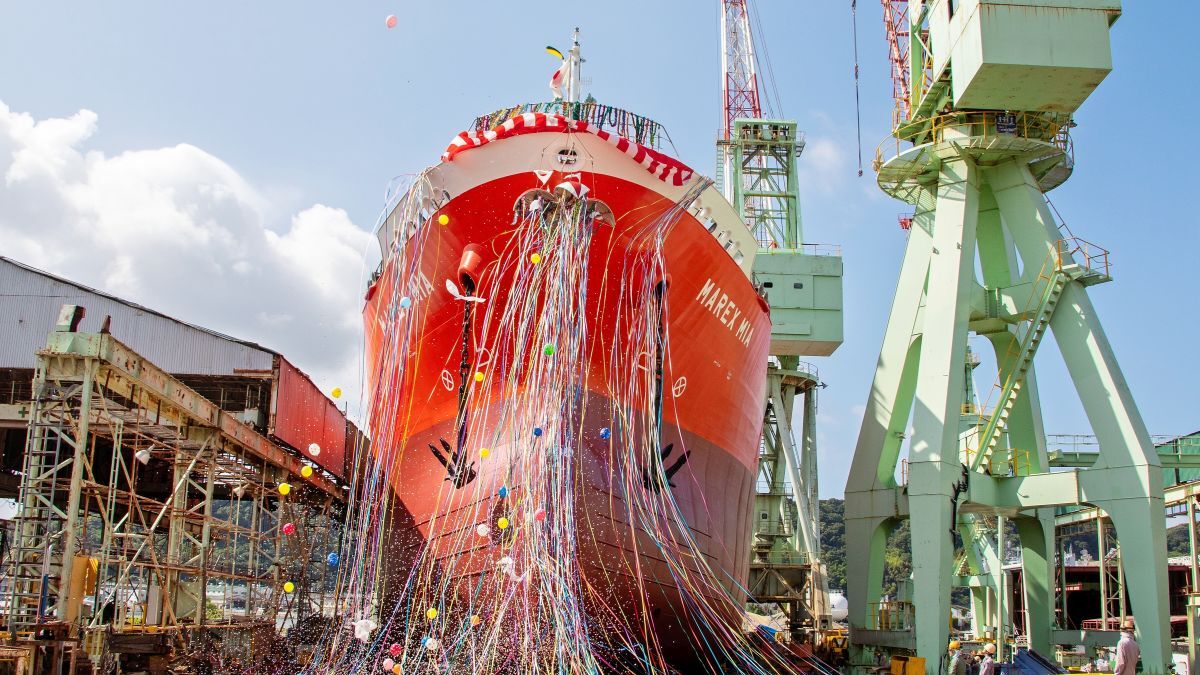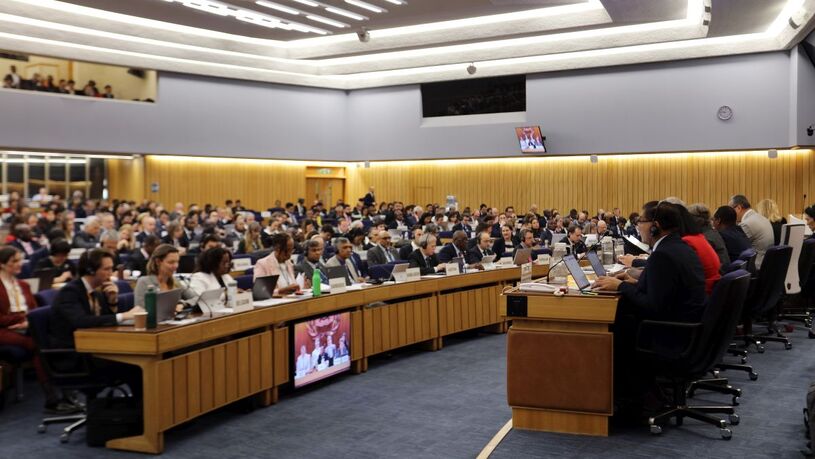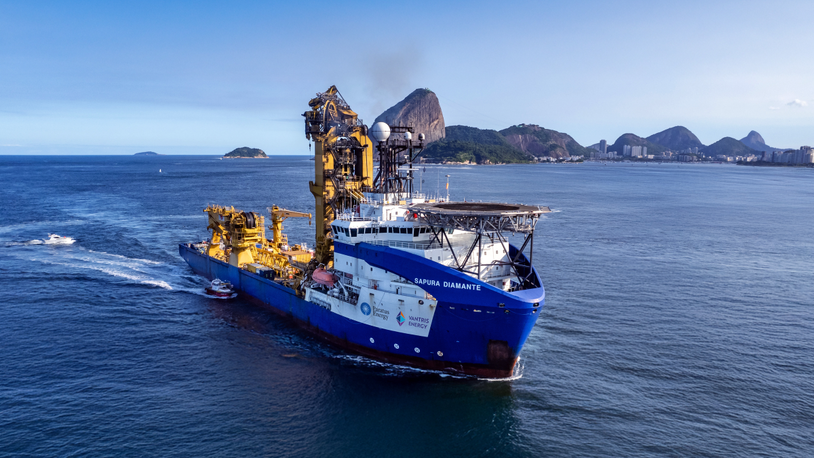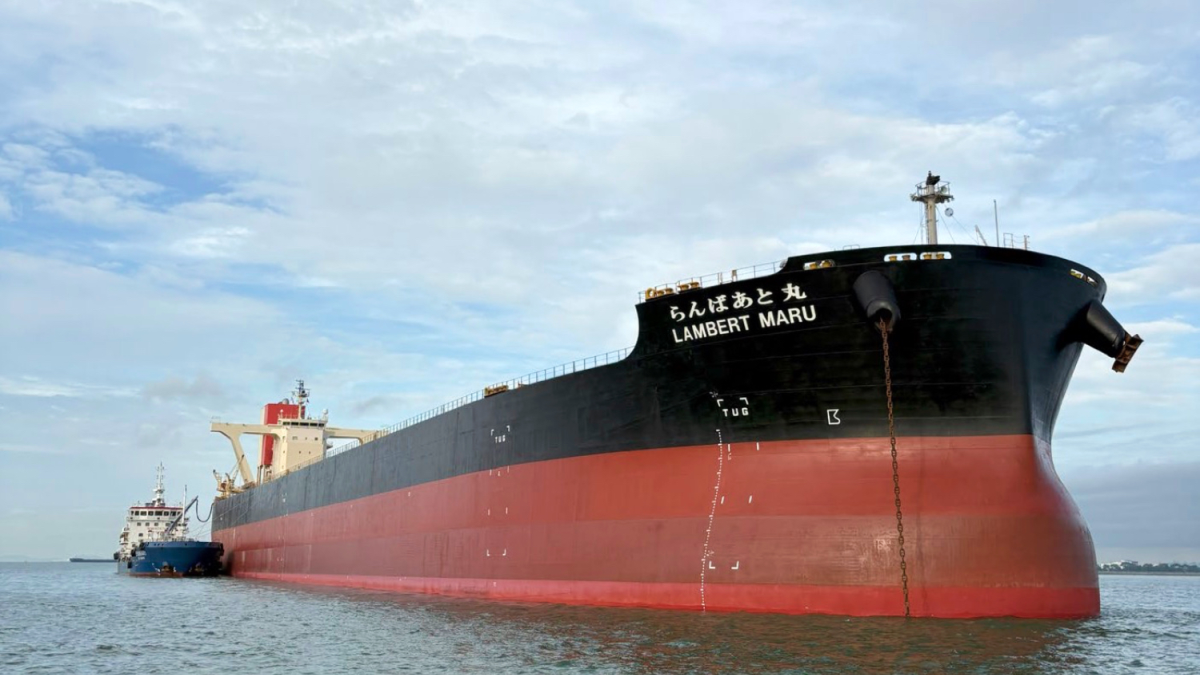Business Sectors
Contents
Register to read more articles.
How shipping can blend its way to decarbonisation with bioLNG
Used as a drop-in fuel with fossil LNG, bioLNG can meet a significant part of shipping’s energy needs in the decades ahead, while reducing GHG emissions
Used as a drop-in fuel and blended with its fossil-based cousin, bioLNG could cover up to 16% of shipping’s energy demands in 2030 and 63% in 2050, significantly advancing shipping’s decarbonisation path, according to a recent study.
The findings in the study, “The role of bioLNG in shipping industry decarbonisation”, which are based on using bioLNG in a 20% blend with LNG, suggest one potential pathway to decarbonisation for shipowners. Conducted by the Maritime Energy and Sustainable Development Centre of Excellence (MESD CoE) at Singapore’s Nanyang Technological University, the study explores the availability of bioLNG as a marine fuel, which is produced from sustainable biomass resources. The study takes into account biomass demand from sectors such as wood and paper production, heat and power generation, aviation and heavy-duty road transportation.
“Production of bioLNG is forecast to expand tenfold by 2030”
BioLNG, also known as liquefied biomethane or LBM, will be among the cheapest sustainable alternative marine fuels, says Steve Esau, chief operating officer of SEA-LNG, which commissioned the research.
Increasing GHG reductions
The availability of alternative fuels such as bioLNG are critical as global shipping faces increasingly stringent international greenhouse gas (GHG) emission reduction targets. Since GHG emissions are cumulative, inaction today stores up problems for tomorrow, making the achievement of climate targets more difficult, points out Mr Esau.
Meeting shipping’s decarbonisation challenge will depend on the affordability and availability of a basket of low- and net-zero carbon fuels. However, he says it is unlikely to be a “big bang” process where shipping moves overnight from fossil to zero-emission renewable fuels, but is more likely to take place incrementally as these new fuels become commercially available.
The study evaluates whether the use of bioLNG is a credible step on the LNG pathway, leading shipping to its GHG emissions reduction targets.
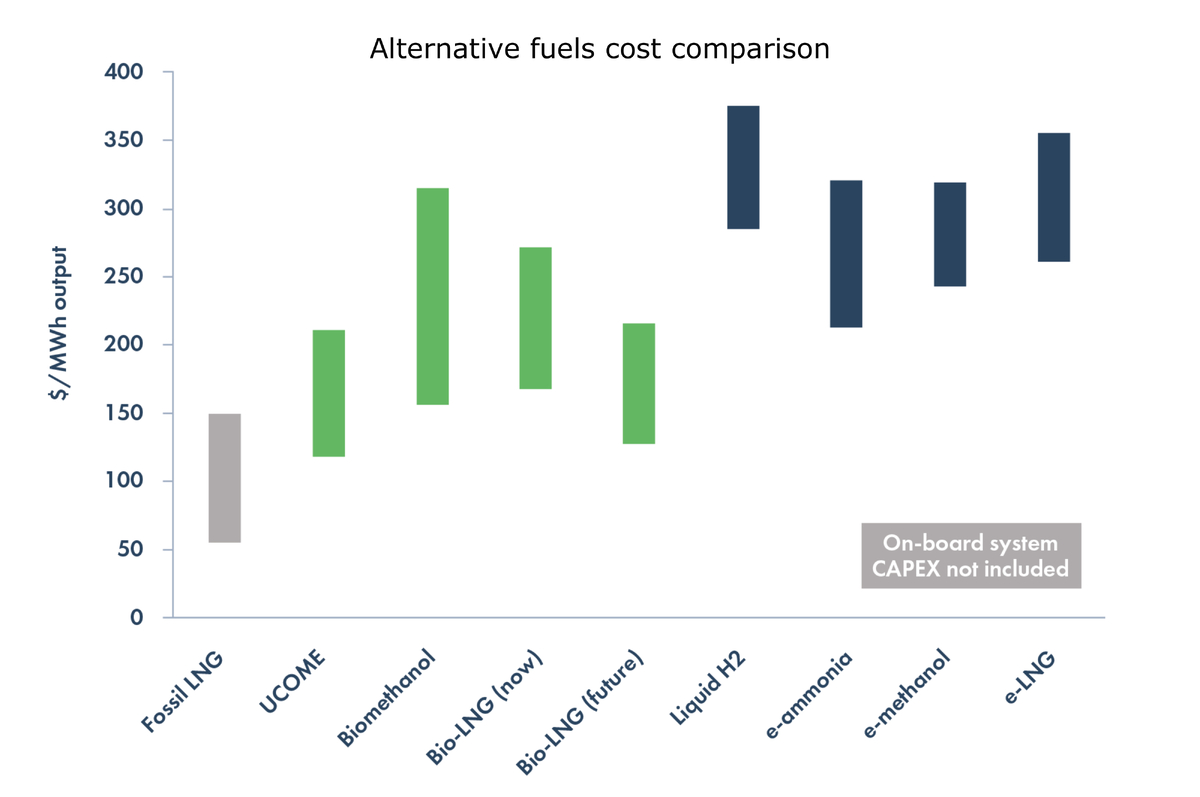
Fuel availability and cost
BioLNG is available now, widely used as a net-zero fuel for heavy-duty vehicles within the EU and is already commercially available as a drop-in bunker fuel in the maritime sector. Investment in bioLNG production is growing, with 78 bioLNG plants within the EU forecast to be operational in the next two years. Overall, production of bioLNG is forecast to expand tenfold by 2030, with recent announcements from Titan, Wärtsilä and Ecospray showing how producers are responding to demand from shipping.
Alternative fuels present the hurdles of availability and cost. The report forecasts average costs for delivered bioLNG will fall by 30% by 2050 compared to today’s values, mainly driven by the reduced cost of producing biomethane in large-scale anaerobic digestion plants. This makes bioLNG one of the cheapest low-carbon alternative marine fuels, compared to biomethanol and electro-fuels such as e-ammonia and e-methanol, says Mr Esau.
Cutting emissions, eliminating slip
BioLNG is a proven pathway to carbon neutrality as it reuses waste from farming activities, industries, and households to create green fuel. BioLNG production can avoid and capture methane emissions that would otherwise be released into the atmosphere, taking this waste and regenerating it into clean carbon-free energy — an example of a circular economy. Among the potential technologies required to produce alternative fuels, bioLNG production is considered one of the most mature.
“The average cost for delivered bioLNG will fall by 30% by 2050”
In general, bioLNG can reduce GHG emissions by up to 80% compared to marine diesel, if methane leakage in the production process and on-board methane slip are minimised. Mitigating such releases is critical as methane is a potent greenhouse gas, with a GWP of 28-34 times that of CO2 on a 20-year time scale. In the specific case of bioLNG produced from anaerobic digestion of manure, if avoided emissions are considered, then bioLNG can achieve negative emissions ranging from minus 121% to 188% compared with marine diesel fuel.
Engine developers are addressing methane slip, and these new engines make up the majority of the LNG-fuelled newbuild order book. For those technologies where it remains an issue, engine designers are working on clear technology pathways to eliminate methane slip by 2030.
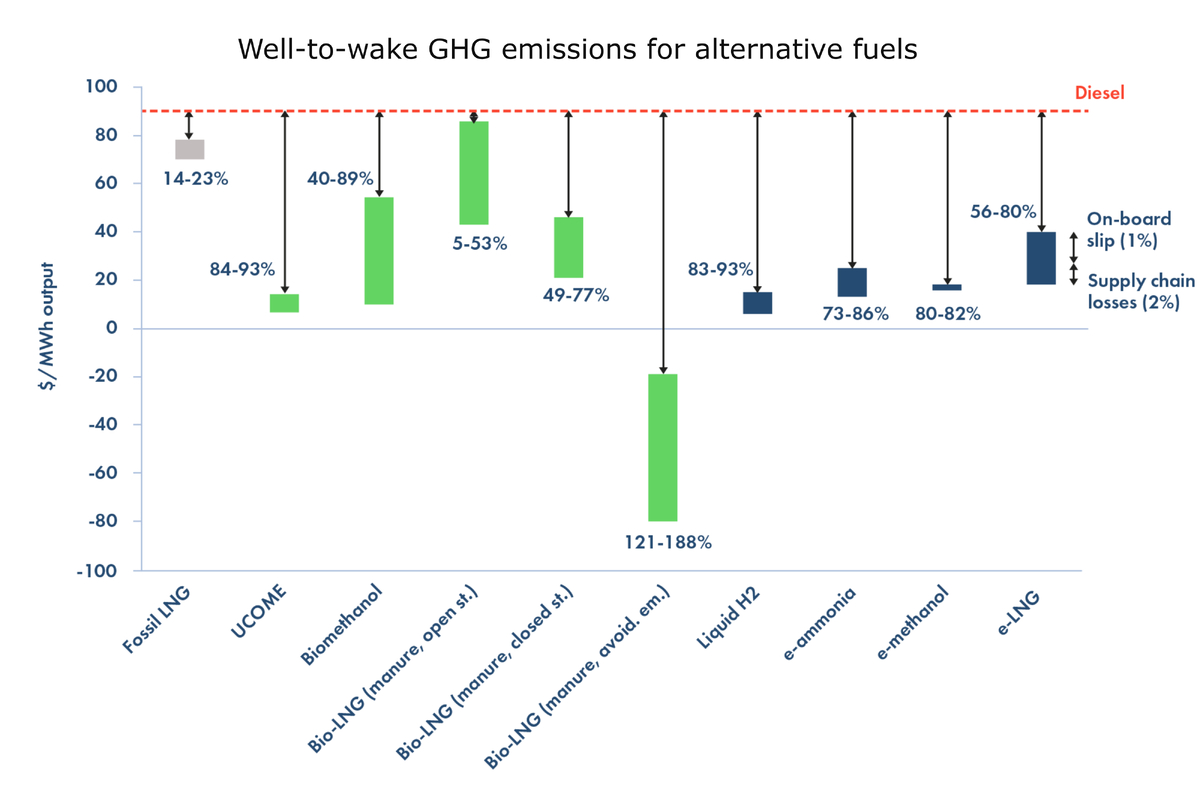
Using existing infrastructure
The study also investigated the benefits from existing LNG infrastructure and its impact in reducing logistics costs. Since bioLNG is pure, liquefied methane, indistinguishable from natural gas, it can be delivered via Europe’s existing gas infrastructure, without the need for huge new investments. Using existing LNG infrastructure, bioLNG can be used as drop-in fuel in existing LNG-fuelled engines and can also be transported, stored and bunkered in ports.
Furthermore, the study highlights that the adoption of bioLNG in shipping will be linked to the widespread use of biomethane across other sectors. This will require national and international standards for biomethane injection into gas grids, and a clear Guarantees of Origin system to simplify trading in the commodity. Using the existing global gas networks to facilitate different locations for production and consumption would maximise the potential of biomethane and bioLNG by creating deeper, more liquid markets and lowering costs.
A decarbonisation pathway
When assessing decarbonisation options for the maritime sector it is essential that each pathway is evaluated, not simply the destination. Regulation needs to be goal-based and technology-neutral, based on assessments of fuels on a full lifecycle, well-to-wake basis.
Mr Esau says the study’s findings provide reliable, independent evidence on both availability and cost, proving that bioLNG is a credible alternative fuel for the decarbonisation of the shipping sector, and can play an important role in meeting GHG emission reductions targets for the maritime sector.
Related to this Story
Events
LNG Shipping & Terminals Conference 2025
Vessel Optimisation Webinar Week
Marine Coatings Webinar Week
© 2024 Riviera Maritime Media Ltd.




